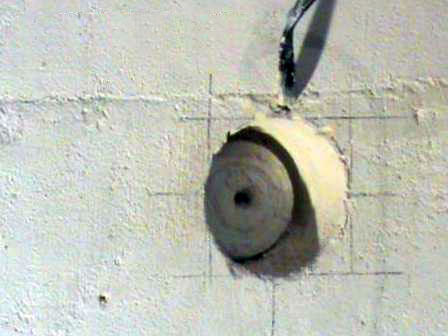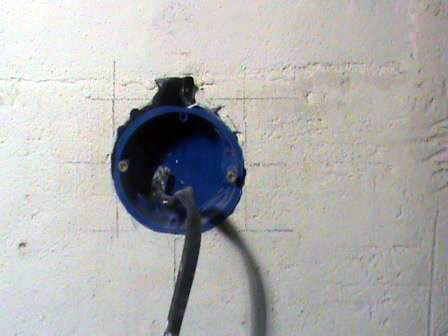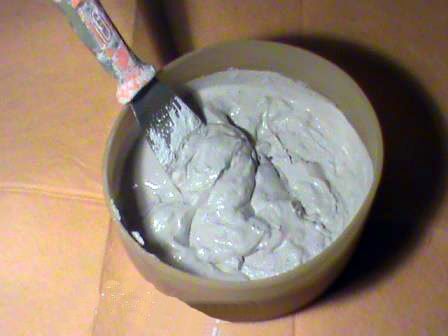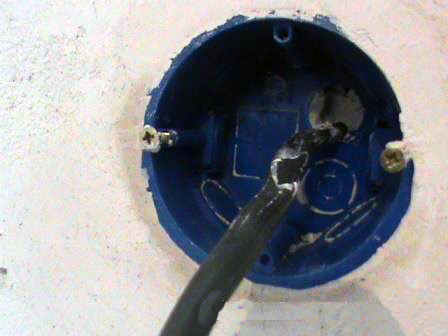Instructions in pictures for installing a wall socket in a wall
What to look for before installation
Before you decide to install the product in the wall, you must correctly select the type of socket. To date, the following varieties of so-called glasses for sockets and switches are on sale:
- Plastic, without presser feet. Used to install the housing in a concrete and brick wall.

- Plastic with presser feet. Allows you to quickly install the socket in the wall of drywall and plastic panels.

- Metal (with / without bottom). Previously used in the installation of electrical wiring in prefabricated panel houses of the old type. To date, they can be applied if necessary. conduct electrical wiring in a wooden house in a hidden way (very rarely you can find such an option). According to the rules of the PUE, it is possible to install sockets and switches in a tree only if the socket is metallic, so this version of the glass has not yet been removed from production.

Choosing the right product variant, you can proceed to the preparatory work, which we’ll talk about now!
Sidebar preparation
So, in order to install the socket box with your own hands, you must first prepare the following set of materials and tools:
- Hammer or electric drill;
- A crown on gypsum, brick or concrete (depending on which wall will be ditched) or a drill bit;
- Building level;
- Marker;
- Spatula and gypsum putty (if drywall or wood, then do not);
- Chisel and hammer.
Having prepared all the materials, you can proceed to installing the socket in the wall. Now we will briefly consider how to insert and fix a glass under the outlet in each of the existing wall options.
Installation technology
In concrete and brick
If you need to install a wall socket in a concrete or brick wall, then you need to proceed as follows:
- Make markings on the surface using a building level and a marker in accordance with the wiring diagram in the house. Socket height can be chosen at its discretion, the norms of SNiP and GOST are not specified at the moment.All that is needed is to put a cross in a suitable place (the center of the future hole), lean the socket in the center and circle with a marker.

- Using a puncher and a suitable crown, drill a stub 4-5 mm deeper than the height of the cup you are about to set. If there is no special milling cutter at hand, simply drill a group of holes in a circle with a drill with a drill with a drill and knock out the core with a chisel and hammer. Another way is to carefully make a square hole with a diamond grinder.




- When you manage to make a round stroba, clean it from the inside, then try on the socket, so that it fits well into the seat and there are no difficulties with installation in the future. Immediately cut a hole in it for the input of the wire and lead the wires inward.



- Dilute the mortar in order to coat the undergrowth in a concrete or brick wall. A good solution can be obtained from gypsum putty, alabaster and water.

- Moisten the hole and put a solution inside with a spatula, as shown in the photo. After that, carefully fix the glass flush with the wall, while the screws on the sides are strictly parallel to the floor (otherwise the socket cannot be installed exactly).

- Coat the edges and remove excess solution so that the glass is clean and prepared for further electrical work after the putty has set.


In such a simple way, you can independently install a wall socket in a wall of brick, concrete, foam block or even aerated concrete. Be sure to check out the video instructions provided below to see clearly the whole essence of the installation.
In drywall
It’s an order of magnitude easier to fix a sock in a drywall partition. There is no need to dilute the solution and knock out the core of the strobes with a chisel. As we said earlier, there is a special glass with presser legs, which easily fix the undergrowth in drywall.
In order to install the glass yourself in a gypsum wall, you need to perform the following steps:
- Mark on the surface by analogy with the previous technology. We examined the layout of the drywall in detail when we talked about how to install a wall outlet in drywall.
- Cut a hole in the bottom for the wires and insert the product inside the strobes.
- Tighten the screws on the sides until the box is firmly locked inside.
That’s all you need to do to install the socket box in the plasterboard wall with your own hands. As you can see, everything is very simple and even a beginner in electrics can install the product. We draw your attention to the fact that if the gypsum partition is additionally tiled, you need to act a little differently. The video below provides the technology for fixing the glass under the ceramic tile.
In a tree
Well, the last of the mounting options - in a wooden wall. If you decide conduct covert wiring in a wooden house, which is very strange and unsafe, it will be necessary to make the strobes in the tree for the installation of metal sockets.
In this case, you can use a special crown on wood and a chisel, but we still strongly recommend installation of open wiringbecause in this case, you won’t have to shatter the wooden walls or the lining.
Practical tips
We have listed all the existing methods for installing a socket in a wall with our own hands. In the end, I would like to give some useful tips that will allow you to quickly and correctly mount glasses in the gates.
- If your walls are covered with PVC panels (for example, in the bathroom), buy a wall socket for drywall and carry out the installation similarly to the fastening technology in GKL sheets.In order not to accidentally pull out the socket from the plastic panel when pulling out the electric plug, it is recommended to make a reinforcing frame of plywood or the same gypsum behind plastic.
- Install products after plastering the walls. If you first install the glass in the shtroba, and then plaster the walls, you may not be able to install the socket flush in the future. It is better to play it safe and not install while the walls are not plastered. At the same time, putting a sock after the wallpaper has already been glued is also not a good solution, because will have to disrupt the decorative wall decoration, which can ruin the interior of the room. That is why the golden mean is the installation of the product immediately after plastering, because in extreme cases, finishing putty and wallpaper will be able to close all defects.
- Check the horizontal level of the layout with a building level, especially if you decide to install a block of socket boxes (for 3-4 outlets). Otherwise, after you fix the connected glasses in the wall, you can get a slanting block that will negatively appear on the interior of the room (the double socket will be a curve). The video instructions for installing glasses in a brick wall (at the very beginning of the article) show a very convenient technology for marking and gating, which will make the seats for sockets and switches perfectly smooth.

- If you have a situation when you need to install a sock in a through hole (for example, in an apartment) or in a hole that is too large, simply lay on more alabaster and put a glass on the wall in the usual way. You can also use a spreader made of wooden blocks to pre-attach a plastic cup. Using mounting foam for mounting is a moot point. On the one hand, the PUE rules do not prohibit the use of this material, but on the other hand, the foam does not satisfy the fire safety conditions, so it is better to use alabaster.
- When replacing the wiring in the house, you can of course leave the old holes for the socket outlets, if you are comfortable with the installation height of the built-in sockets and switches. Otherwise, you can always cover up the old holes and make new ones where it will be more in demand.
- If the wall is too thin for attaching a standard glass, it is better to install a patch switch or an outlet. Of course, you can trim the height of the undergrowth a little and make it suitable, but this is only as a last resort.
That’s all I wanted to tell you about how to install podrozetniki in a concrete, brick, wooden and plasterboard wall. We hope that the information provided, photo examples and video tutorials were useful and understandable for you!
Also read:








Everything is just great, but for complete happiness there are not enough options for preparing putty. Then the instruction would be complete.
Thank!